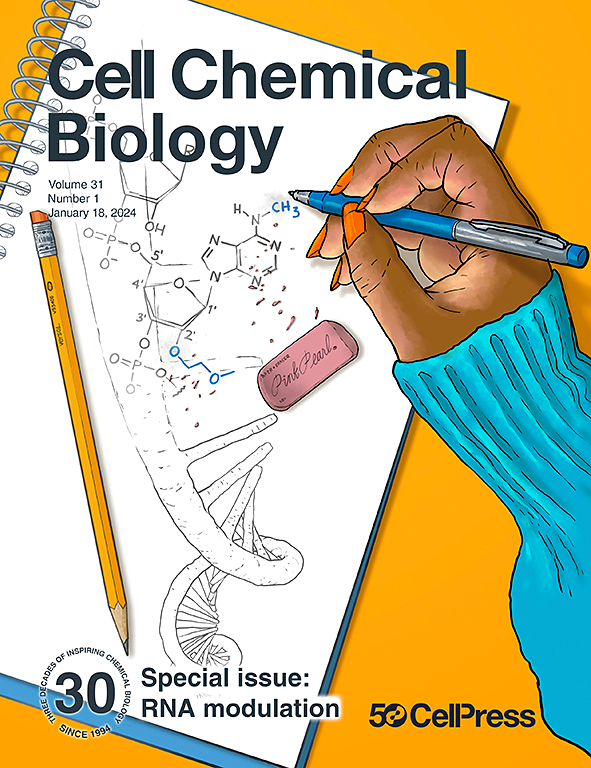EGR2 O-GlcNAcylation orchestrates the development of protumoral macrophages to limit CD8+ T cell antitumor responses
IF 7.2
1区 生物学
Q1 BIOCHEMISTRY & MOLECULAR BIOLOGY
引用次数: 0
Abstract
Tumor associated macrophages (TAMs) exhibit a high capacity to take up glucose. However, how metabolic cues derived from glucose rewire TAMs remains unclear. Here, we report that glucose metabolism-driven protein O-GlcNAcylation increases in TAMs and shapes the differentiation and protumoral function of TAMs. Deficiency of O-GlcNAc transferase (OGT) in TAMs restricted tumor growth by reducing the proportion of C1QC+ F4/80+ TREM2+ MerTK+ TAMs as well as Trem2 expression, which in turn preserved the cytotoxic function of effector CD8+ T cells while exhibiting reduced features of exhaustion. Mechanistically, O-GlcNAc targeted the macrophage-specific transcription factor EGR2 to promote its transcriptional activity. Transcriptional profiling revealed that OGT increased EGR2-related motifs accessibility in TAMs. O-GlcNAcylation of EGR2 at serine 299 enhanced its binding to myeloid cell differentiation-associated genes, including Trem2, thus facilitating the protumoral function of TAMs in GM-CSF-sufficient tumor. Overall, our work defines a tumor-specific reprogramming of protumoral TAMs via O-GlcNAc-modified EGR2 transcriptional regulation.


EGR2 o - glcn酰化调节原肿瘤巨噬细胞的发育,以限制CD8+ T细胞的抗肿瘤反应
肿瘤相关巨噬细胞(tam)表现出高的葡萄糖摄取能力。然而,来自葡萄糖的代谢线索如何重新连接tam仍不清楚。在这里,我们报告了葡萄糖代谢驱动的蛋白o - glcn酰化在tam中增加,并塑造了tam的分化和原肿瘤功能。TAMs中O-GlcNAc转移酶(OGT)的缺乏通过降低C1QC+ F4/80+ TREM2+ MerTK+ TAMs的比例以及TREM2的表达来限制肿瘤的生长,这反过来又保留了效应CD8+ T细胞的细胞毒功能,同时表现出减少的衰竭特征。机制上,O-GlcNAc靶向巨噬细胞特异性转录因子EGR2以促进其转录活性。转录分析显示,OGT增加了tam中egr2相关基序的可及性。EGR2丝氨酸299处的o - glcn酰化增强了其与骨髓细胞分化相关基因(包括Trem2)的结合,从而促进了tam在gm - csf充足肿瘤中的原瘤功能。总的来说,我们的工作通过o - glcnac修饰的EGR2转录调控定义了肿瘤特异性的原肿瘤tam重编程。
本文章由计算机程序翻译,如有差异,请以英文原文为准。
求助全文
约1分钟内获得全文
求助全文
来源期刊

Cell Chemical Biology
Biochemistry, Genetics and Molecular Biology-Molecular Medicine
CiteScore
14.70
自引率
2.30%
发文量
143
期刊介绍:
Cell Chemical Biology, a Cell Press journal established in 1994 as Chemistry & Biology, focuses on publishing crucial advances in chemical biology research with broad appeal to our diverse community, spanning basic scientists to clinicians. Pioneering investigations at the chemistry-biology interface, the journal fosters collaboration between these disciplines. We encourage submissions providing significant conceptual advancements of broad interest across chemical, biological, clinical, and related fields. Particularly sought are articles utilizing chemical tools to perturb, visualize, and measure biological systems, offering unique insights into molecular mechanisms, disease biology, and therapeutics.
 求助内容:
求助内容: 应助结果提醒方式:
应助结果提醒方式:


